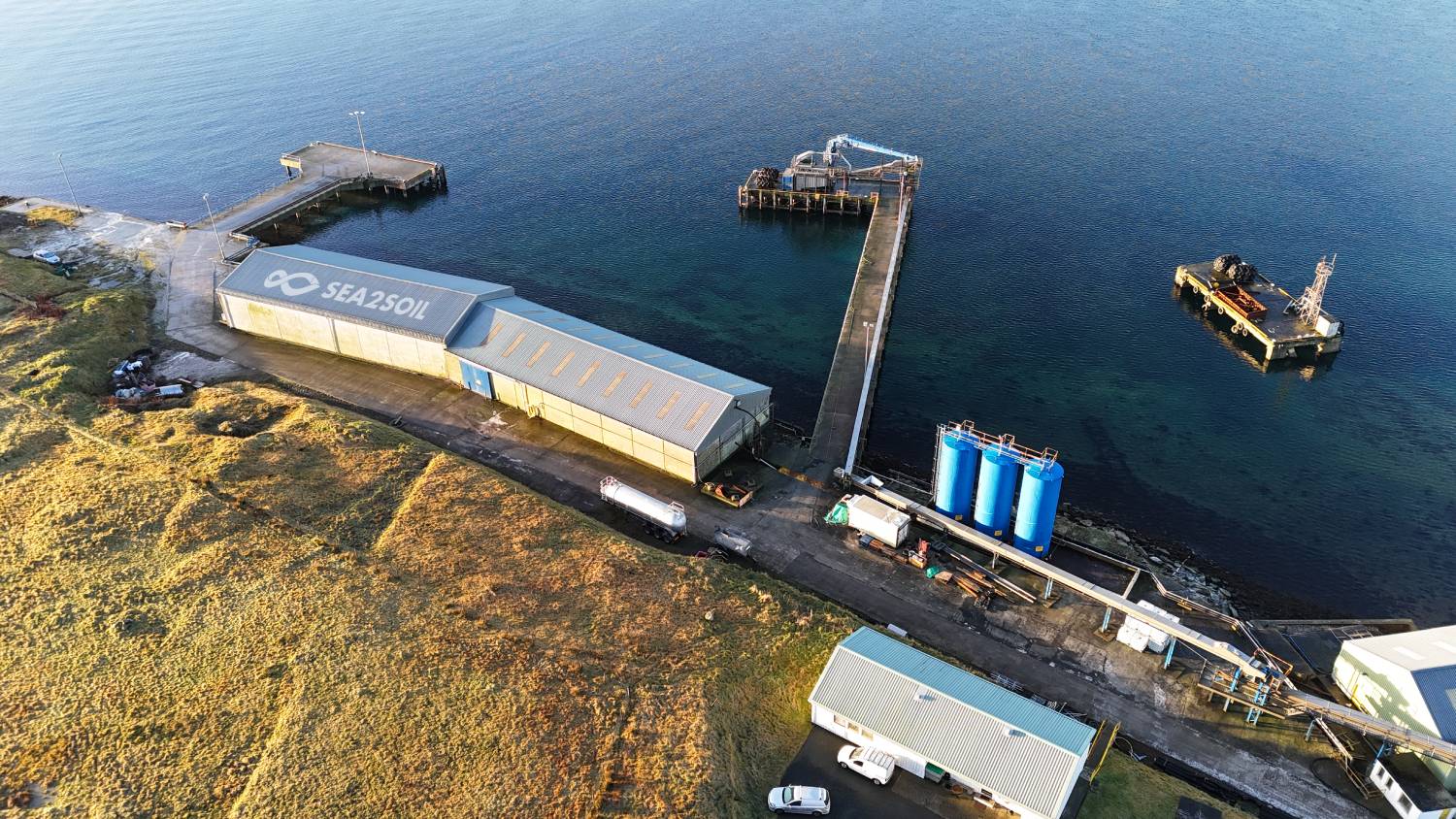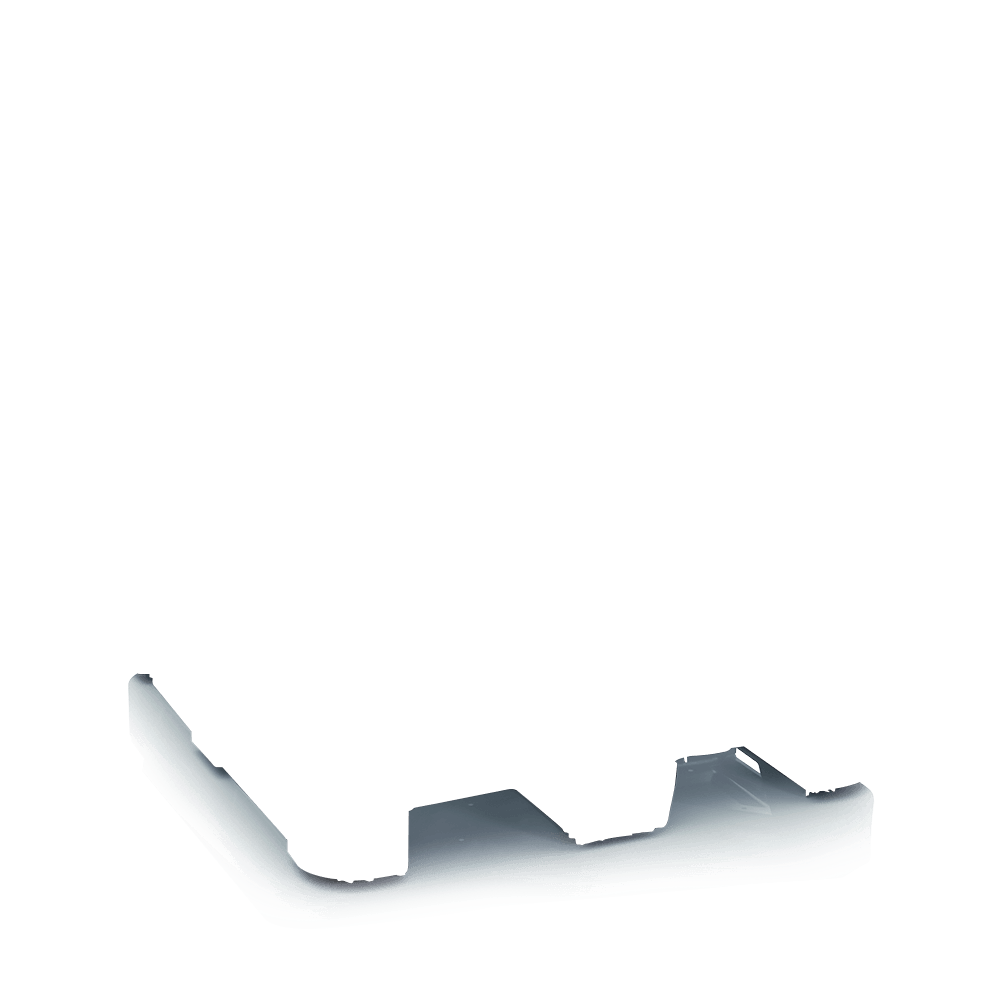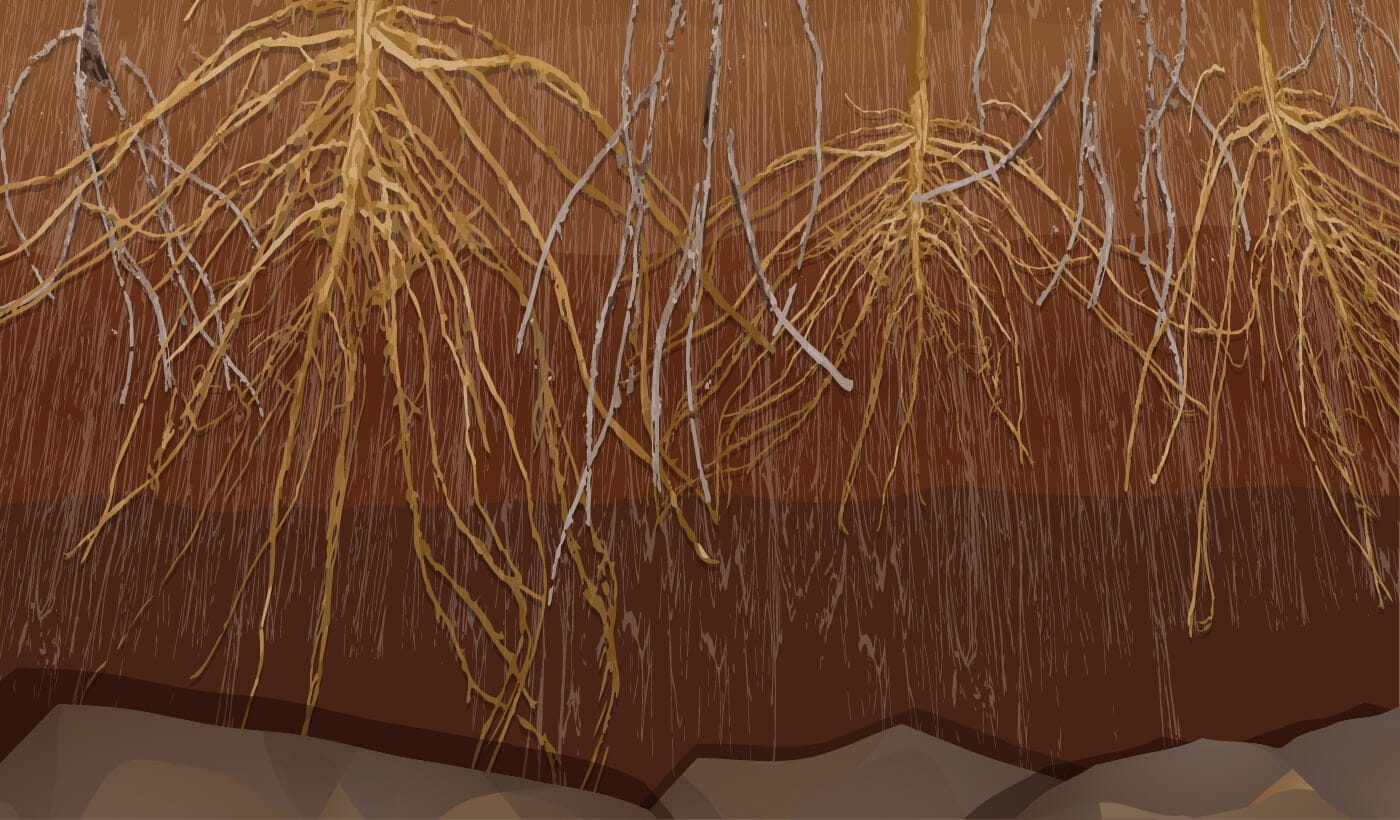

Sea2Soil’s parent company, Pelagia, has been utilising farmed fish and farmed fish by-products to produce highly nutritious feed materials for over a century. With the aim of improved sustainability, recycling and zero waste from the industry, our R&D teams have formulated a high-quality product using responsibly sourced by-products previously unused and sent for waste. Sea2Soil is processed from the waste products and unused frames of farmed salmon in Bressay on the Shetland Isles. All the waste products come from Pelagia’s farmed salmon sites in Scotland. Using this waste material ensures a fully sustainable use with zero waste and prevents any disposal of unwanted waste to the environment.
Yes, Sea2Soil can be mixed with certain liquid fertilisers. Our general advice is that this is done/for use at ‘farmer’s own risk’. A simple bucket test before tank mixing is also recommended, especially as frequent ingredient changes occur with a number of different liquid fertilisers.
Sea2Soil is also currently working on further tank mix compatibility testing with a broader range of liquid fertilisers to expand the approved list.
Yes, Sea2Soil is compatible in tank mix with a wide range of plant protection products, including a number of fungicides, herbicides and PGRs. Sea2Soil conducts compatibility testing work each year with Eurofins to broaden our compatibility checks and approved listing.
Yes. Sea2Soil is approved for use in both conventional and organic situations to improve your soil and promote natural, sustainable crop growth. It is also ideal for modern regenerative and minimal cultivation farming techniques being adopted by a growing number of farms today.
Sea2Soil offers valuable flexibility for growers and fits in well with all farming systems; approved for use across conventional and organic situations to improve your soils and promote natural, sustainable crop growth.
Sea2Soil is a liquid product which works in standard farm sprayers. There are two main ways to use the product;
When tank-mixed with herbicides in foliar applications, the fish oil content in Sea2Soil helps act as a natural surfactant, which can enhance spraying performance. The product is pre-screened (filtered) to 100 μm. Thoroughly clean any filters within your equipment after each use.
| Foliar application: |
| Direct soil application: |
| Recommended dilution: |
Multiple applications can be made during the growing season.
*Always seek advice from your agronomist before using and applying Sea2Soil for use in organic production. Not to be applied to any edible parts of plants. Following application, an interval of at least 21 days must be observed before animals are permitted to graze the land or before crops/herbage are harvested.
No. Sea2Soil is a soil improver packed with natural amino acids and nutrients derived from a fish hydrolysate, which makes Sea2Soil unique and differentiates it from many other seaweed-based products available in the market. Sea2Soil conditions soils, improves soil health and promotes plant growth, feeding crops more efficiently to help them reach their full potential. Sea2Soil is the UK’s first soil improver based on fish hydrolysate and is a market leader in this technology sector in agriculture.
Sea2Soil’s research-led field trials programme is all about discovering more. Our research work is vital to test how well Sea2Soil performs across different soils, climates, crops and under different farm management regimes. We have been conducting R&D trials with Sea2Soil since 2020, and a wide range of new field trials work is already planned in 2026 for product development and customer support purposes. Our trials are run across a number of different crops and include independent trials run by specialist agronomy companies, trials conducted by other research organisations and universities and large-scale farm trials.
Our research, trials and soil consultancy partners include Eurofins, NIAB, The University of Nottingham, TerraFarmer, Claydon Drills, Waitrose Farms, Soil First Farming, BASE UK and others.
Sea2Soil is the UK’s first liquid fish hydrolysate approved by the Animal & Plant Health Agency (APHA) and The Soil Association. Sea2Soil also has full organic accreditation with the Organic Farmers & Growers C.I.C. as well as OF/SI Approval from the Scottish Government (which classifies the Sea2Soil product as an Organic Fertiliser / Soil Improver).
Sea2Soil’s existing organic use status with the UK Soil Association and Organic Farmers & Growers as a certified product allows for use in both their approved input schemes run in the UK.
Sea2Soil can provide growers a multitude of benefits, including:
Sea2Soil is approved for use on a wide range of crops, including cereals, oilseed rape, linseed, potatoes, pulses, field vegetables, maize, grassland and agro-forestry. For further information on any of these crops listed or for any crops not listed, please contact Grant James.
Sea2Soil helps to boost and replenish the nutrient content in the soil, promoting plant health and optimal crop growth. Plants cannot function and grow efficiently without the assistance of beneficial soil bacteria and fungi. Sea2Soil provides vital nutrients to boost soil microbial activity and soil health. Sea2Soil can be utilised by both the soil microbiome and the plant directly and contains a full range of naturally balanced amino acids and fatty acids.
Sea2Soil is naturally high in fat and promotes the growth of fungi, which are hugely important in soil root systems, performing important functions within the soil: nutrient cycling, disease suppression and water dynamics. The improved microbial populations also feed secondary and higher-level consumers like protozoa, nematodes, and earthworms, which work to improve soil structure by aerating the soil, leading to better root development and a reduction in abiotic stress. These macro-organisms also contribute to improved nutrient availability in the soil through excretion, providing additional bioavailable nutrients to the growing plant.
Sea2Soil promotes a biologically active soil, fostering beneficial microorganisms and earthworms. This can help soils have better aeration, retain moisture and release nutrients in a bioavailable form to plants, increase stress tolerance and promote better, healthy crop growth.
Hydrolysation is the process of breaking down complex proteins into their component amino acids. These can then be utilised by both the soil microbiome and the plant directly. Fish hydrolysate contains a full range of naturally balanced amino acids and fatty acids. Rich in essential nutrients such as nitrogen, phosphorus and potassium, it also provides important micronutrients like calcium, magnesium and other trace elements in a bioavailable formulation, establishing a good basis for any crop nutritional plan. Fish hydrolysate utilises recycled by-products of the aquaculture industry that would otherwise go to waste. Sea2Soil is packed with vital nutrients and amino acids derived from its fish oil content, providing a real health boost for soils and crops.
Each application typically provides the following nutrients*:
| Amino acid content: | 25-30% (composed of 20 amino acids in both L and D forms) |
| Fatty acid content: | 5-8% |
| Dry matter content: | 45-50% |
| Macronutrients: | N (5%) P (0.7%) K (0.6%) C (27%) Ca (0.6%) S (0.4%) Mg (0.1%) |
| Micronutrients: | B (trace) Cl (8850ppm) Co (trace) Cu (4ppm) Fe (190ppm) Mn (4ppm) Mo (0.1ppm), Na (5630ppm) Ni (trace) Se (1ppm) Si (trace) Zn (60ppm) |
| pH: | 3.5-4.5 |
*Analysis may vary due to the organic nature of the product
Sea2Soil has flexible application timings for ease of use. In the autumn, we recommend applying early, around drilling or pre-drilling, to help get the soil micro-organisms going as soon as possible. A split application approach (autumn followed by early spring) has been found to be the most effective.
Quick guide to optimal application timings
Winter cereals: Apply Sea2Soil @10 L/ha pre-emergence, or as soon after drilling as possible. Follow up with 10 L/ha in early spring, as you can travel or to coincide with an early spring herbicide or T0 fungicide application. It is better to spray while the crop leaf area is still small.
Winter oilseed rape: Apply Sea2Soil @10 L/ha pre-emergence, or soon after drilling. Follow up with 5 L/ha in autumn (at 4-6 leaves), then a further 5 L/ha in spring before stem elongation. Alternatively, if the autumn application is missed, follow up with 10 L/ha in early spring.
Winter covers/catch crops or green stubble fallows
Cover crops, over-wintered green stubbles: Treat in a similar way to winter-sown crops. Apply Sea2Soil at 10 L/ha pre-emergence, or as soon after drilling as possible during the early autumn period. Follow up with 10 L/ha early in spring, ideally as soon as you can travel, to boost soil health and nutrition ahead of spring drilling.
Spring cereals, potatoes, pulses, maize, new grass leys: Spray 10 L/ha pre-emergence, or soon after drilling and follow up with 5 or 10 L/ha later in spring (before stem elongation in cereals).
Grassland trials conducted by research partners in new grassland pastures and herbal leys have shown beneficial improvements and increases in sugar content from Brix tests conducted on Sea2Soil-treated grassland compared to non-treated areas. Similar work on bi-crops of cereals and pulses has also highlighted clear improvements in growth and photosynthetic capacity of protein crops in treated areas using NDVI measurements taken by aerial drones. Importantly, farmers are also seeing and reporting overall improvements in their return on investment when using Sea2Soil.
Sea2Soil has been tested and proven under real farm conditions for a number of years. Many growers using the product have reported small yield increases (c.5%+) in their crops, and most have also reported improved soil health, often reflected in better biological activity, including increased earthworm numbers and activity.
Independent research trials and farm scale trials using Sea2Soil began in 2020 across the UK on various crops including wheat, barley, oilseed rape, oats and beans. The aim was to identify how yield performance was affected and to assess areas for further product development. The results found have been very positive, with crop yields either maintained or increased across our trial work.







This element is essential for protein synthesis, structure, metabolism, and chlorophyll production. A balanced nitrogen level is crucial for optimal plant health.
An essential component in DNA, RNA and ATP, phosphorus is essential for cell division and development of the growing plant. For this reason, it is an essential element for nurturing seedlings and young plants.
A deficiency in potassium makes plants vulnerable to drought, excess water, extreme temperatures, pests, diseases, and root issues. Plants will also be less resistant to pests, disease and nematode attacks due to root dysfunction and reduced rooting volume.
Important for amino acid production, chloroplast growth and nitrogen utilisation, sulphur is required to form part of an enzyme that facilitates nitrogen uptake - vital for healthy plant growth.
A major constituent of cell walls important for cell division and elongation as well as root growth. In the absence of soil solution calcium, root growth will cease.
Magnesium is the central core of the chlorophyll molecule in plant tissue. Thus, if magnesium is deficient in the soil the resulting shortage of chlorophyll results in poor and stunted plant growth.
Copper is used during grain production, and there an important element for soil health. One of eight essential plant micronutrients, copper deficiency can lead to increased susceptibility to diseases.
Balancing soil selenium is critical to avoid environmental risks. Adequate levels enhance plant tolerance to stress factors like drought, salinity, and toxic metals, safeguarding plant health.
Manganese works to sustain metabolic roles within plant cells. It is also an essential cofactor for the oxygen-evolving complex (OEC) during photosynthesis.
Important in plant enzymic function and involved in the synthesis of chlorophyll; iron is paramount in the maintenance of chloroplast structure and function.
It forms chlorophyll, aids in carbohydrate formation, enhances cold tolerance and it's vital for growth regulation and stem elongation through auxin formation.
A cofactor in amino acid production and a component in two key enzymes in nitrogen metabolism, without sufficient molybdenum, plants can accumulate nitrate in their leaves, but cannot optimise it.
It is involved mainly in nitrogen metabolism, the uptake of iron and specific enzymatic activities.
It strengthens plants, reducing lodging and pest attacks, while boosting light absorption for enhanced photosynthesis and growth. Additionally, it protects plants from insects, diseases, and environmental stress by bolstering their defence response.
Vitamin B12 which contains cobalt is synthesised by the rhizobium, therefore a deficiency in this micronutrient is shown in reduced Vitamin B12 production and lower nitrogen fixation.
It assists with the plant's uptake of other soil nutrients and regulates the water flow through a plant. Wheat and other cereal grains are particularly sensitive to chloride deficiency.
Attaching to soil particles, acting as a repellent, this effect caused by the presence of sodium disperses the soil and breaks down the crumb structure. It is these small particles that move in the soil water and block the soil pores that are so important for root growth.
Helping to give soil its moisture-retention capacity, structure and fertility, carbon helps to aggregate soil particles to provide resilience to degradation while increasing water storage and protecting plants from erosion.
Playing a major role in cell wall biosynthesis, Boron influences many growth factors including root elongation, tissue differentiation, pollen germination, pollen tube growth, and cell membrane functions.

We recommend not applying Sea2Soil in January. Using a soil improver at this time of year and have a detrimental effect on soil biology. Sea2soil is at is most efficient when soil temperatures are above 8C.
We recommend not applying Sea2Soil in February. Using a soil improver at this time of year and have a detrimental effect on soil biology. Sea2soil is at is most efficient when soil temperatures are above 8C.
As soil temperatures increase, feeding the soil biology is essential for nutrient availability throughout the growing season.
Soil application of Sea2Soil at 10+l/Ha
Destruction of cover crops Sea2Soil can be applied to prepare the soil biology for drilling.
Soil application of Sea2Soil at 5-10l/Ha
Sea2Soil cannot be applied to any edible part of the plant. If applied to grass a withdrawal period of 21days is required before grazing animals are turned out onto the pasture.
Soil application of Sea2Soil at 5-10l/Ha
Foliar application of Sea2Soil at 5-10l/Ha
Foliar application of Sea2Soil at 5-10l/Ha
Sea2Soil cannot be applied to any edible part of the plant. If applied to grass a withdrawal period of 21days is required before grazing animals are turned out onto the pasture.
Sea2Soil at 5-10l/Ha
Sea2Soil cannot be applied to any edible part of the plant. If applied to grass a withdrawal period of 21days is required before grazing animals are turned out onto the pasture.
Sea2Soil at 5-10l/Ha
Sea2Soil cannot be applied to any edible part of the plant. If applied to grass a withdrawal period of 21days is required before grazing animals are turned out onto the pasture.
Sea2Soil at 5-10l/Ha
Sea2Soil cannot be applied to any edible part of the plant. If applied to grass a withdrawal period of 21days is required before grazing animals are turned out onto the pasture.
Sea2Soil at 5-10l/Ha
Sea2Soil cannot be applied to any edible part of the plant. If applied to grass a withdrawal period of 21days is required before grazing animals are turned out onto the pasture.
Sea2Soil at 5-10l/Ha
Sea2Soil cannot be applied to any edible part of the plant. If applied to grass a withdrawal period of 21days is required before grazing animals are turned out onto the pasture.
Sea2Soil at 10+l/Ha
We recommend not applying Sea2Soil in November. Using a soil improver at this time of year and have a detrimental effect on soil biology. Sea2soil is at is most efficient when soil temperatures are above 8C.
We recommend not applying Sea2Soil in December. Using a soil improver at this time of year and have a detrimental effect on soil biology. Sea2soil is at is most efficient when soil temperatures are above 8C.



Sea2Soil cannot be applied to any edible part of the plant. If applied to grass a withdrawal period of 21days is required before grazing animals are turned out onto the pasture.
Before use, complete a jar test for compatibility and test on a small area first. When mixed with herbicides the fish oil in this product serves as a natural surfactant when foliar spraying.






















Play a pivotal role in nutrient cycling, improving soil structure and promoting better root development.
Consume bacteria, excreting nutrients in a bioavailable form that plants can utilize.
Sea2Soil provides key nutrient, increasing populations of healthy soil bacteria which play an important role in improving soil structure and fertility.
Sea2Soil is a rich energy source for beneficial fungi, which perform important functions in the soil, such as nutrient cycling, disease suppression, water dynamics and carbon sequestration.
We have worked with agronomists and farmers to develop a 100% organic, regenerative soil improver.